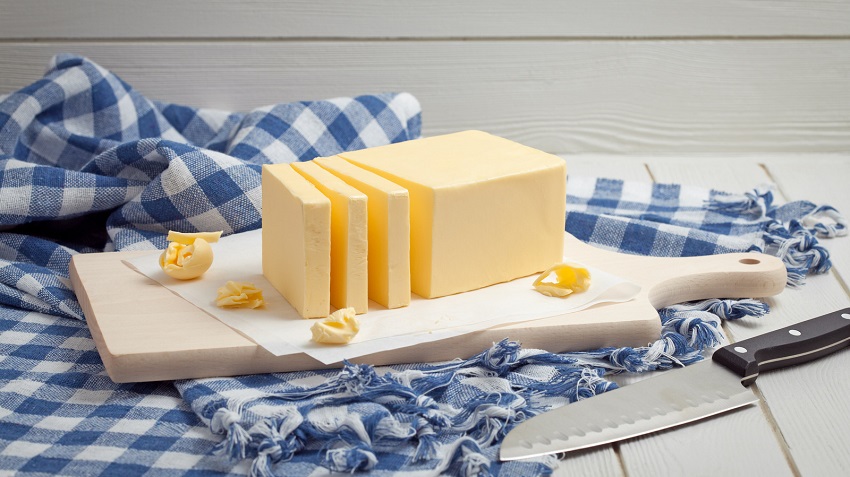What Color Is Bad Butter?

If you’ve ever come across a questionable batch of butter, you might have wondered, “What color is bad butter?” Butter is a staple ingredient in many recipes, and it’s essential to ensure that the butter you’re using is fresh and safe for consumption. In this article, we will explore the different colors of butter, what they indicate, and how to identify bad butter. So, let’s dive in and shed some light on the subject! The content is introduced by https://foodwithkidappeal.com/
The Natural Color of Butter
Butter, in its purest form, is typically a pale yellow or cream color. This natural color can vary slightly depending on factors such as the cow’s diet and the season. Grass-fed cows tend to produce butter with a more vibrant yellow hue due to the presence of beta-carotene, a pigment found in green plants. On the other hand, butter from cows fed a grain-based diet may appear lighter in color.
Identifying Fresh and Good Butter
When it comes to butter, it’s important to ensure that it’s fresh and of high quality. If you’re wondering does butter expire, the answer is yes. Over time, butter will begin to lose its flavor and aroma, and may even develop a rancid smell. To ensure that you’re using fresh butter, look for a consistent pale yellow or cream color with no discoloration or spots. Fresh butter should also have a smooth and creamy texture, and should spread easily. And of course, don’t forget to check the expiration date!
Signs of Bad Butter
Unfortunately, butter can go bad just like any other food product. When butter turns bad, it may develop an off-color, indicating that it’s no longer suitable for consumption. Here are some common colors that bad butter may exhibit:
1. Pale or White Color
If butter appears pale or white, it could be an indication that it has been exposed to air or light for an extended period. Exposure to oxygen and light can cause butter to oxidize, resulting in discoloration. While pale butter doesn’t necessarily mean it’s unsafe to eat, it might have a rancid or off-flavor. It’s best to use your judgment and consider other factors like smell and taste.
2. Yellow or Brown Spots
Yellow or brown spots on butter could be a sign of mold or bacterial growth. If you notice these spots, it’s advisable to discard the butter, as it could potentially cause foodborne illnesses. Mold growth on butter can occur due to improper storage conditions or extended shelf life.
3. Green or Blue-Green Color
A green or blue-green tint on butter is usually caused by the presence of mold. It’s important to note that mold can produce harmful toxins, so it’s crucial to avoid consuming butter with this type of discoloration. Mold growth on butter can occur due to moisture exposure or improper refrigeration.
4. Gray or Black Color
Gray or black discoloration on butter is an indication of spoilage. It could be caused by various factors such as oxidation, bacterial contamination, or exposure to high temperatures. Butter with these colors should be discarded immediately, as it can pose health risks.
Tips for Preserving Butter
To ensure that your butter stays fresh and maintains its natural color for longer, consider the following tips:
- Proper Storage: Store butter in an airtight container or wrap it tightly in foil or wax paper to protect it from air and light.
- Refrigeration: Keep butter refrigerated at a temperature between 32°F (0°C) and 41°F (5°C). This will help prevent bacterial growth and maintain its freshness.
- Freezing: If you have excess butter, consider freezing it to prolong its shelf life. Make sure to use a freezer-safe container or wrap it tightly in freezer bags to prevent freezer burn.
- Rotate Stock: When purchasing butter, ensure to use the older stock first to avoid ending up with expired or spoiled butter.
- Check Expiration Dates: Always check the expiration date on the butter packaging before purchasing or consuming it.
Conclusion
Bad butter can come in various colors, each indicating a different type of spoilage. While pale or off-color butter doesn’t necessarily mean it’s unsafe to consume, colors like green, blue-green, gray, or black are definite signs of spoilage. To ensure that you’re using fresh and good butter, check for any unusual discoloration, spots, or mold growth. By following proper storage techniques and paying attention to the quality of your butter, you can enjoy this delicious ingredient without any worries.
FAQs (Frequently Asked Questions)
Q1. Can I still use butter if it has a pale or white color?
A1. While pale or white butter doesn’t necessarily mean it’s unsafe, it might have a rancid or off-flavor. It’s best to use your judgment and consider other factors like smell and taste.
Q2. What causes mold to grow on butter?
A2. Mold growth on butter can occur due to factors such as moisture exposure, improper refrigeration, or extended shelf life.
Q3. Is it safe to consume butter with yellow or brown spots?
A3. Yellow or brown spots on butter could be a sign of mold or bacterial growth. It’s advisable to discard butter with these spots to avoid potential foodborne illnesses.
Q4. How should I store butter to maintain its freshness?
A4. Store butter in an airtight container or wrap it tightly in foil or wax paper to protect it from air and light. Keep it refrigerated at the appropriate temperature range.
Q5. Can I freeze butter to extend its shelf life?
A5. Yes, you can freeze butter to prolong its shelf life. Use a freezer-safe container or wrap it tightly in freezer bags to prevent freezer burn.







